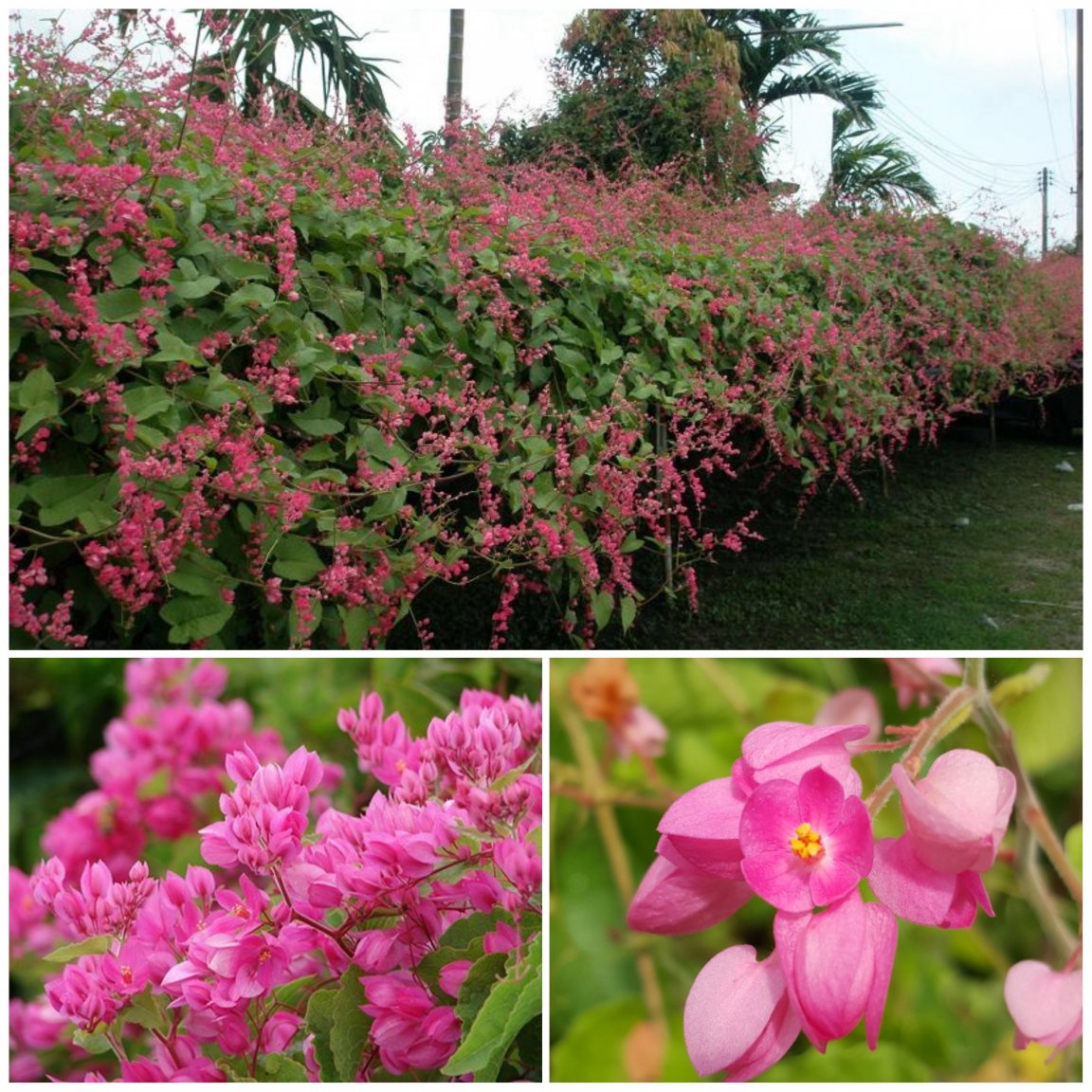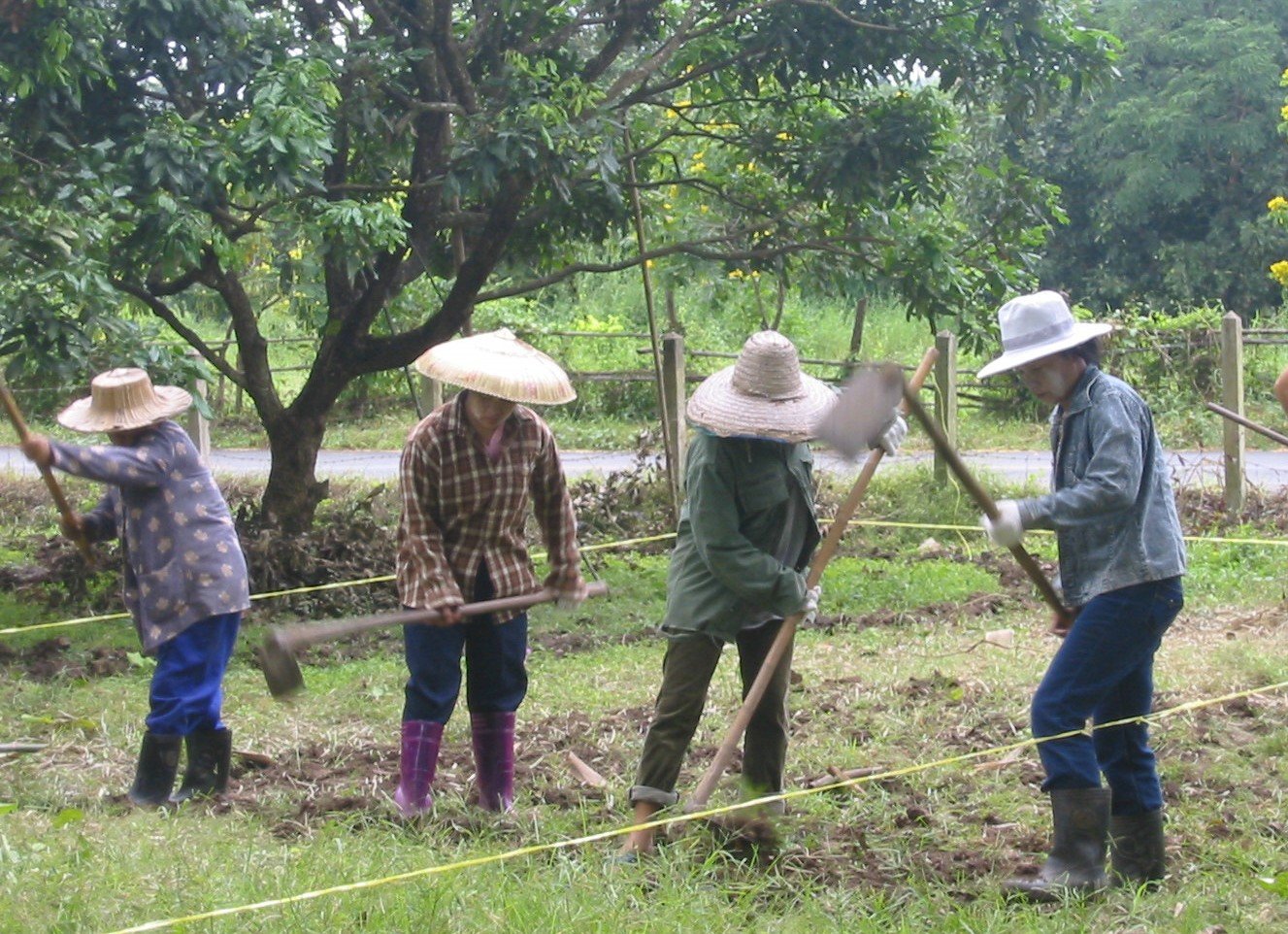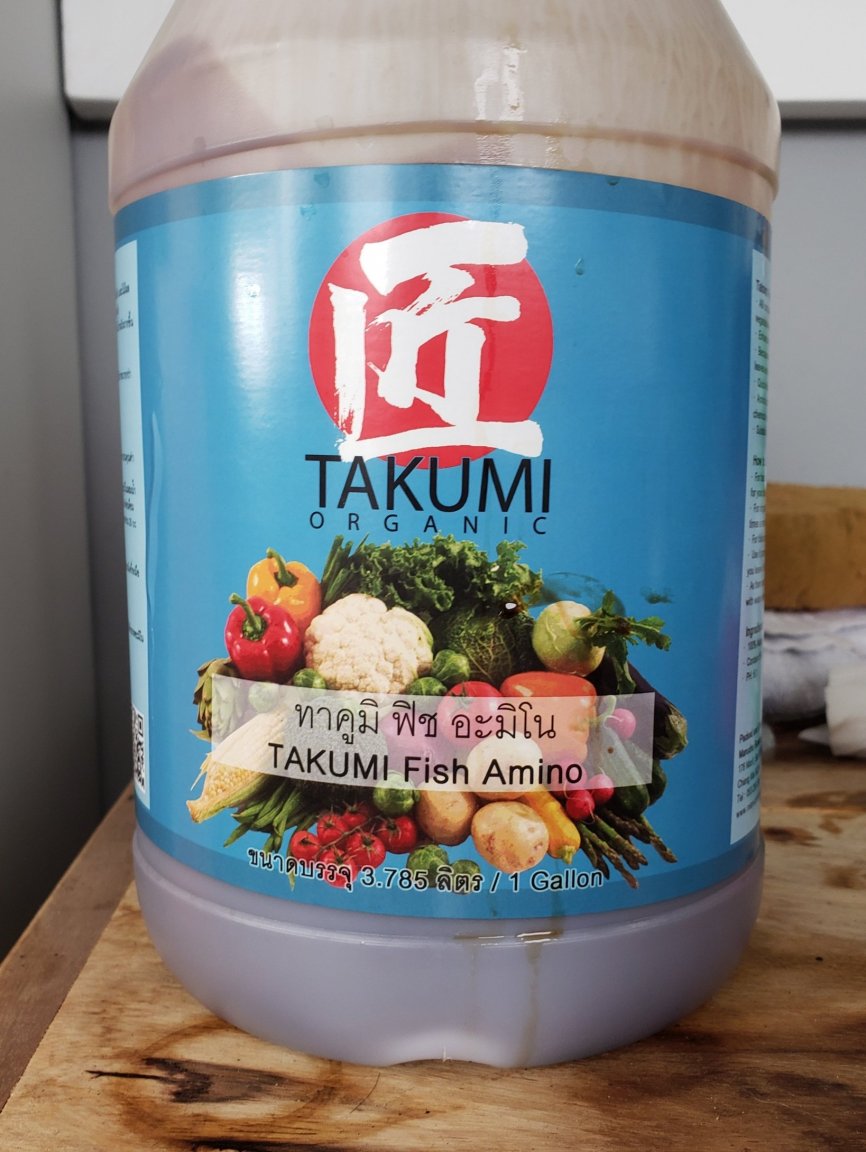
drtreelove
Advanced Member-
Posts
1,927 -
Joined
-
Last visited
Content Type
Events
Forums
Downloads
Quizzes
Gallery
Blogs
Everything posted by drtreelove
-
I don't want to discourage biololgical control efforts, but I'm not sure that this is realistic. "If you can get them" is a key term, and if you can release enough numbers (repeatedly) to adequately feed on the pest population for a short time before the ladybugs fly away. And "new hatchings" is another key term. Advanced infestations are difficult to control. Preventive management is preferred. Why are the mealybugs there in the first place? Healthy plants grown on healthy soil don't get pests and diseases.
-
Good points! And enfeebled also by nutrient deficiencies and reduced natural resistance to pests. Oily residue and the smell of neem oil is objectionable to some gardeners and for some edible plants. Mealy bugs can be water-jet sprayed off to greatly reduce numbers, and also on some types of plants can be rubbed off with a rag or cotton-glove. I recently used an insecticidal soap solution to knock down mealy bug infestations (and ants along with it) on some customer's plants. Then biofertilized to begin building soil, plant health and resistance. Homemade Insecticidal Soap Recipe The simplest insecticidal soap is nothing more than a 2% soap solution. To make this at home, you will need: Sprayer: Any clean spray bottle or garden sprayer will work fine for spraying insecticidal soap. Make sure the sprayer or bottle hasn’t been used for herbicides. Pure Soap: Use a pure liquid soap, such as Castile, or all-natural soap. The active ingredient in insecticidal soap comes from the fatty acids in animal fat or vegetable oil, so it’s important to use the real thing. Don’t use detergents (which aren’t actually soaps), dish soaps, or any products with degreasers, skin moisturizers, or synthetic chemicals. Dr. Bronner’s Pure Castile Soap is usually pretty easy to find in stores, or check your local natural-foods store for other options. Pure Water: Tap water is fine for making insecticidal soap. If you have hard water, you may want to use bottled water to prevent soap scum from building up on your plants. To make homemade 2% insecticidal soap, mix together: 5 tablespoons soap to 1 gallon of water OR 1 heavy tablespoon soap to 1 quart of water Homemade Insecticidal Soap Recipe Variations Like any other home remedy, there are as many variations on this recipe as there are gardeners! You can also try: Diluted Solution: If the spray causes damage or burns your plant foliage, cut the amount of soap in half and try a 1% solution. This is the concentration usually found in commercial sprays. The lighter solution might be less effective but is gentler on plants. Cooking Oil: To help the solution stick a little longer, add two tablespoons of light cooking oil (such as corn, canola, olive, or safflower) per gallon of water to the mix. Vinegar: To make a spray that also targets powdery mildew, add a teaspoon of cider vinegar per gallon of water to the mix. Garlic or Pepper: To help repel chewing insects, add a teaspoon of ground red pepper and/or garlic per gallon of water to the mix. Bar Soap: For a less-exact recipe, drop a bar of pure soap (such as organic bar soap or Ivory) into a gallon of water and leave it overnight. Remove the bar and shake well before spraying.
-
Comfrey grows like magic! It is a remarkable plant with amazing vigor, regenerative properties and a multitude of uses. There are controversial issues around human and livestock health and toxicity that you should look into. In Thailand is is not well-known or widely used, or available. It may be idealistic to consider cultivating it, unless you have sourcing for seeds or are patient and dedicated in propagating from your one plant. https://www.permaculture.co.uk/articles/comfrey-its-history-uses-benefits/#:~:text=Ground cover – Some species can,the best species for this. I don't know about comfrey in southern Thailand, but I've grown it in California, Chiang Mai and in southern India (Tamil Nadu Coramandel Coast) where there are double-whammy monsoon deluge seasons like southern Thailand. There we cultivated it on burms surrounding organic field crops, for biological control - pest predator habitat, and production of biomass for mulching and compost. Tuberous comfrey is used for ground cover, but knowing what I do now, I would prefer a mixed species cover crop for soil-building in an orchard or palm plantation. Cover-cropping orchards and vineyards - Dr Christine Jones https://youtu.be/PJs8GU1cG30?si=aKmMgXp1oCSDH112 Good on you if you are cover cropping for soil building in an oil-palm plantation. Our oldest daughter works in the palm oil industry in Chumphon and lives at her partner's familly plantation. I've seen firsthand the popular use of 0-0-60 fertilizer. Yes the large palm fruit has a high demand for potash, like durian. But the use of Potassium chloride is short-sighted and one of the worst things that you can do for soil and plant health. Repeated use is detrimental to the benefical soil biology and represents one of the worst aspects of chemical farming and soil degradation. Which of course can contribute to reduction of natural resistance to plant pests and diseases.
-
Yes, wet and stringy, fibers will wrap cutters and shaft and clog. Only a larger chipper will do it. https://vermeerthailand.com/wp-content/uploads/2021/10/bc700xl-brush-chipper-spec-sheet-updated.pdf https://vermeerthailand.com/contact-us/ Cost-effective alternative: chop and drop (cut and leave lay) for mulch. add manure for fertility. What variety are you growing? What province?
-
Vegetables are grown successfully all over Thailand. But as with the nurturing of all living things, vegetables, trees, shrubs, grass, soil, as well as children and pets, the first attempts will be a learning experience. Don't give up, you learn as you go. Sowing seeds directly into the ground may not be the best idea, unless you know how to prepare the soil. Poor soil conditions are prevalent, seeds and seedlings need special nutritional support to germinate and get established. It's hard to find vegetable 'starts' (young plants) in Thailand, but not impossible. I recommend that you start seeds in small pots or flats, and while they are germinating and putting out new leaf surface and roots, you can start preparing the soil or obtaining some quality potting soil for containers. https://maruchubussan.co.th/ Start with some easy to grow veggies, like pole beans (yard-long beans, tua pak yao), Chinese kale (pak ka nah). Water management is all-important. YouTube is loaded with channels. Good luck sorting it all out. SelfSuffientMe that was mentioned is a good one. This book has some good guidelines on the comprehensive (multi-faceted) program it takes to be a successful grower: https://www.amazon.com/How-Grow-More-Vegetables-Ninth/dp/0399579184
-
No need to find it, it's easy to make your own ghee from butter. https://www.thepioneerwoman.com/food-cooking/recipes/a91575/how-to-make-ghee/
-
What trees to plant in concrete ring? half day of sun.
drtreelove replied to JeffersLos's topic in Farming in Thailand Forum
With the description of the site and expectations "The bigger the trees the better" - lime, papaya, and other fruit trees may not get tall enough, soon enough to gather the sunlight needed for photosynthesis, and in my opinion they are more challenging for an inexperienced grower to manage tree health and disease resistance. These are severely compromised growing condtions. Don't expect it to be easy to maintain fruit tree health and longevity. -
What trees to plant in concrete ring? half day of sun.
drtreelove replied to JeffersLos's topic in Farming in Thailand Forum
Consider bananas. That is what I have used in a similar situation. It was cheap and easy and the results of this planting have been very satisfying. I was gifted with dwarf nam wah banana offshoots from a friend's organic farm. (kluai nam wa (กล้วยน้ำว้า). Any woody tree selection will take longer to grow and acheive the height to gather afternoon sunlight for photosynthesis. And trees in containers is a 'short term' plan, they cannot grow to maturity in a healthy way, in such a limited soil volume. Bananas in an improved soil (compost and COF/complete organic fertilizer), in the ground preferably, will grow fast and start to produce bananas in a year. -
Crop rotations can be an important consideration in a comprehensive Integrated Pest Management program. But I plant tomatoes in the same beds. I know that most soil dwelling nematodes, bacteria and fungi, protozoa and microarthropods are beneficial, so I don't want to kill off the good guys by wiping out all the soil biology with baking, harsh chemistry, or other forms of sterilization. I know from my experience in my own gardens over the years and that of hundreds of customers, that "preventing a buildup of diseases in the soil" comes best with soil fertility and good water management, creating good growing conditions for beneficial soil biology to thrive and suppress the pathogens and help the plants build natural resistance pests and diseases.
-
The pink flowering vine that you like may be 'coral vine' Antigonon leptopus. I don't know the Thai name. It's incredibly beautiful, but very fast growing and voluminous, often considered "invasive"; be sure that you have enough space to accomodate the vigorous growth habit, and that you have the ability to manage continuous training-pruning. Seeding and planting can begin as the weather heats up in mid-February, as long as you have water/irrigation, because that's the beginning of the dry-hot season. Without irrigation, wait until the rainy season starts in May.
- 1 reply
-
- 1
-

-
In my opinion, ditch the herbicides and do a manual weed removal for the least-toxic and best long term results. If you want to plant grass and flower beds, the best method would be a dedicated process of removing the existing weedy growth by digging or rototilling, Rake it smooth and deep water or wait for heavy rains to saturate the soil. Weed seeds will germinate and grow back. Dig or rototill them again before they go to seed. Repeat one more time for best measure. Then prepare the soil to a 6" depth by incorporating compost and a complete organic fertiliizer. Overlay with new sod. Then the ongoing weed management will be limited to spot pulling of new weeds and cultivation of your new turf grass, which will eventurally dominate and squeeze out most of the weeds. Mulch the flower beds for some degree of weed suppression, but keep up with weekly weed pulling or digging. It can be enjoyable work and satisfying results if you keep up with it, and if you don't mind getting a little sweaty, tired and dirty.
-
Order "Takumi Organic Super Soil" from Maruchu Busan. They have 25 kg sacks. https://maruchubussan.co.th/ Mix with a high quality vermicompost from Best Garden State or other source. I also use Maruchu Fish Amino Fertilizer. Kind of pricey stuff, but worth it.
-
-
It's a good suggestion, but some other information is important for effective contol. There are different strains of B.t., not all are effective for butterfly larvae. "Common types of Bt strains: Bt israelensis controls immature mosquitos, flies, and gnats. Bt aizawai and Bt kurstaki controls caterpillars of moths and butterflies." National Pesticide information center. Also, from my experience it is most effective with 1st and 2nd instars, maybe 3rd, not 4th and 5th stages of caterpillar growth. Later instars are bigger and tougher and not as easily affected. Also, Bt is not a contact spray, it has to be ingested by caterpillars actively feeding on the foliage to which the Bt has been applied, preferrably with a spreader-sticker adjuvant to keep it in place. A lite spreader-sticker may not be enough during the rainy season, a heavier sticker-extender may be needed. The insect life-cycle timing considerations are important. If you are too late, its a waste. I would add pyrethrins/pyrethrum as a highly effective knockdown spray (organic program compatible, biodegrades in 12 to 24 hours). For small plants, djayz suggestion of mechanical control, hand picking, is good, and no cost or spraying. Wood vinegar for me would be a last resort, not a regular application. It's very harsh and I'm concerned about preserving the foliar microbiome and beneficials.
-
I think you have it backwards. The reason for sad looking trees and the reason that the insect pests are attracted to the trees is inadequate plant nutrition, and often poor growing conditions and water managment. Physiological weakening from drought stress is an invitation to many plant pests. Permacuture, manure, compost and mulch do not necessarily cover all the bases in builiding soil health, plant nutrition and natural resistance to pests. In fact manure, too much manure, especially non-aged/non-composted manure can have detrimental effects on the beneficial soil biology and nutrient cycling.
-
I haven't seen that specific pest damage, but the hole pattern looks like weevil damage. More important than what exact pest is causing it, is why is it there? Plant pests and diseases are many, and there are new ones that are hard to keep up with. If its not one thing it will be another, as long as the trees are physiologically weak and have not developed natural resistance. The foliage shown in the photos is chlorotic (pale, yellowed), most likely from nutrient deficiencies and/or excessive pruning with heading cuts. Use thinning cuts/drop-crotching and don't over-prune, which creates excessive vegetative growth that is attractive to pests. High NPK chemical fertilizer also creates biochemistry that is a pest magnet. Create good growing condtions, build soil organic matter content and a healthy soil microbiome, soil surface shading, mulching, cover cropping, and attend to soil fertility and water management as the first line of defense. Building the tree's natural resistance to pests and disease, protecting and enhancing the soil and foliar biome and beneficials should always be the focus for optimum tree heath care. Look to regenerative agriculture and soil food web principles. Use biologicals and not harsh chemicals.
-
Small Fruit Trees in Pots
drtreelove replied to YorkshireTyke's topic in Plants, Pets & Vets in Thailand
I should have mentioned that there is an advantage to in-the-ground planting and the real mineral soil with more potential for a higher CEC, cation excange capacity (nutrient holding capacity). Container plants, unless the potting soil is intelligently engineered, almost always come with soil-less substrate that has low CEC and water holding capacity. Water runs right through it, as do nutrients. Which makes for more demanding management with irrigation and fertilization. But in-the-ground often meets depleted soil, like construction site clayey fill dirt that requires hard labor to dig a planting hole, and need for imported soil organic matter, like compost. -
Small Fruit Trees in Pots
drtreelove replied to YorkshireTyke's topic in Plants, Pets & Vets in Thailand
This is primarily a dogs, cats and snakes forum. Notice that after all these years, there are no 'pinned' discussions on plants. The Farming forum has more expeneienced growers contributing. -
Small Fruit Trees in Pots
drtreelove replied to YorkshireTyke's topic in Plants, Pets & Vets in Thailand
All need sun, but maybe can tolerate some filtered or afternoon partial shade. As for container or 'in the ground' plantings, it is not an easy question to answer and needs some consideration of the site and soil conditions and your ability to do the work needed, manage soil fertility and watering. In the ground is best for long term growth, as there is more possibility for expansive root growth in a larger volume of soil, but soil improvements, organic matter amendments, biofertilization and a watering plan are best for planting and establishment. Is that something that the site is suitable for and that your interest and experience will support? Container plants are okay for a shorter time frame, and will be less work to get started, but require more management, especially for watering, since a smaller soil volume and elevated exposure to heat will dry out the soil and the beneficial biology, and desicate roots more rapidly. The soil and nutrient availability in container plants will be harder to manage; mulching and cover cropping can't really be used effectively to shade the soil surface, build soil aggregate structure, nutrient cycling and moisture retention. More frequent fertilization will be needed. Ideally, potted plants will need upgrading every two years or so. ("Upgrading" = larger pot and additional soil as the plants grow, the root system expands, and nutrient demands increase.) -
Stimulating stem and left production on "leggy" sapling
drtreelove replied to connda's topic in Farming in Thailand Forum
Kratom may not grow as well in northern Thailand as it does at our daughter's farm in Chumphon, where it thrives even in partial shade of larger trees. Give it the best growing conditions, soil and water management. Soil heath building with bio-fertilizer, bio-stimulants, mulching and deep watering once or twice a week during the dry season. I don't grow kratom, but for other tree and landscape plantings and veggie garden, I use biological fertilizer, - a bat-guano/cow-manure product available at an ag shop across the road from MaeJo University. - Takumi Fish Fertilizer, also available in Mae Jo, at the Maruchu Bussan store. I also use a biostimulant, liquid worm castings effluent, from MJU cannabis farm vermicompost store. https://www.fertileearthlandcare.com/watering-trees/ -
Nong Nooch also has a division in Chiang Mai, with a big nursery - plant materials yard in Tambon Nong Hoi near MaeJo town. And then there is Kamtieng Plant Market in Chiang Mai. And the Chiang Mai/Chiang Rai forum. There has been a discussion about other plant markets outside of Chiang Mai . Pattaya forum? known for a different kind of bush represented there.
-
Sad Pomelo Tree
drtreelove replied to pj123's topic in Organic Farming, Smallholding and Kitchen Gardening
Good advise! Also, from the photo it appears that it was planted too deep, with the root crown buried and susceptible to crown rot from the over watering.








